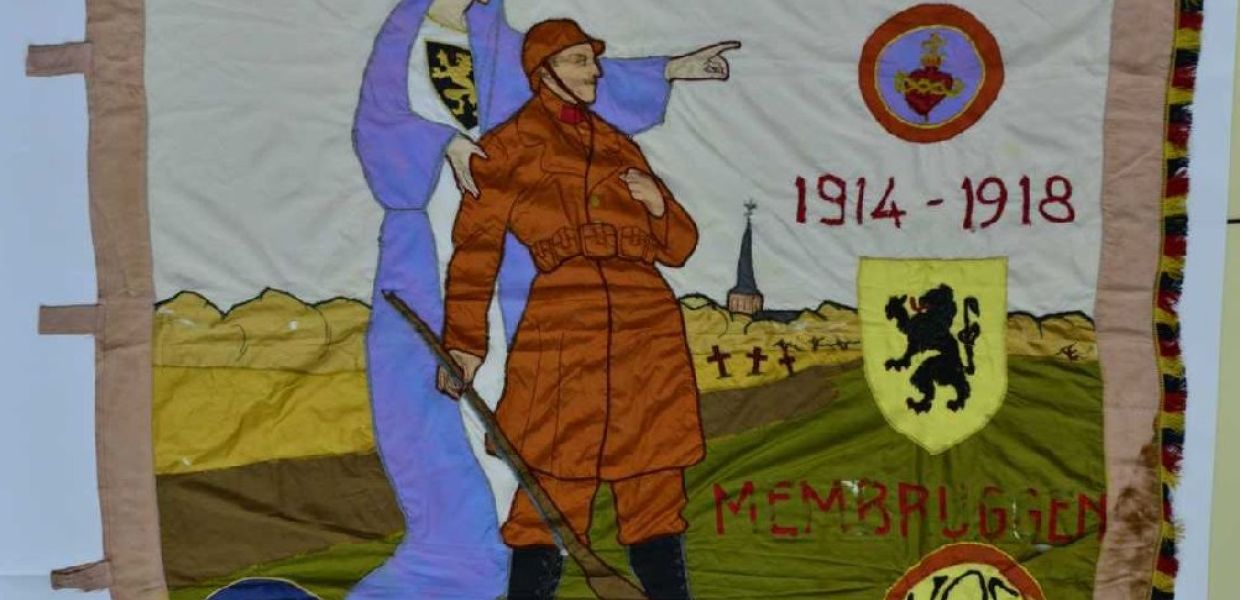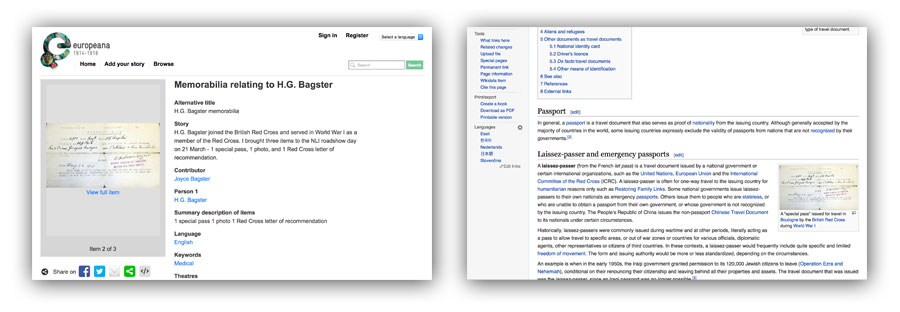WW1 photos and memorabilia from the public now on Wikimedia Commons

Since Europeana 1914-1918 began, thousands of objects from contributors all over Europe have been collected, ranging from scans of historic photos, documents and diaries, to photos of trench art and other physical remains from the First World War. A highly curated set of these materials has now been made available via Wikimedia Commons. We hope that volunteer Wikimedians will now use this material to enhance articles with this previously unseen material.

Verloren vlag VOS Membruggen. CC BY-SA Europeana 1914-1918
The user-generated content (UGC) collected via the Europeana 1914-1918 project shines a unique and often very personal light on the war that involved so many countries and took millions of lives. The material is of great importance to researchers and history enthusiasts, especially because most institutional collections around WW1 offer a less personal view of the conflict.
Gathered at ‘collection days’ organised by Europeana and partners such as the Bibliothèque nationale de France, the British Library, the Deutsche Nationalbibliothek, the material is all accessible online via the 1914-18 website as well as the Europeana portal. Up until now, however, it has not been used in wider resources like Wikipedia.
Because of the enormous reach and breadth of Wikipedia, with millions of articles in every language, having material appear in Wikipedia articles offers an excellent way of to communicate the stories connected to the items. It means their significance reaches people beyond those specifically searching WW1 material too. It also perfectly fits Europeana’s ‘portal to platform’ strategy of making cultural heritage material available via platforms of the user’s choosing. Instead of asking people to visit the Europeana 1914-1918 website to browse through the WWI material, we aim to make the material available via other relevant places.
Making the content available to Wikipedia users
In order to promote wider re-use of the collected WWI material, Europeana set out to do a "batch upload" of the content with the Europeana-developed GLAMWiki Toolset. In order to meet the stringent licensing policies observed by Wikimedia Commons, and ensure the most visually interesting images would be shared, we hand picked a collection of several hundred high quality and historically significant user digital objects from the vast collection. We spent time carefully processing and uploading the objects, making sure that the resulting collection has the greatest possible chance of re-use as a result.
Already some of the content is finding its way into articles, not only about the First World War itself, but also more general articles. Look at this image, for instance, of a 1917 travel document: the item was contributed at the Europeana 1914-1918 collection day in Dublin and is now used in the Wikipedia article ‘Travel document’, where it adds valuable historical context. It also appears in the article on the French village of Boulogne-sur-Mer because the document applied to that specific town. You start to see how the possibilities multiply. Another great example is this image of a ferry in the German article ‘Dampfschiffahrts-Gesellschaft für den Nieder- und Mittelrhein’ - again, the article is only loosely related to WWI but there is a meaningful connection between the image and the article it enriches.

The 1917 travel document on Europeana1914-1918.eu (left). The document has been used to illustrate the Wikipedia article 'Passport' (right)
What you can do with the content
If you’re a Wikipedian or WWI historian - either an individual or a representative from a heritage organisation - we invite you to use the Europeana 1914-1918 material in articles you feel connected with or are an expert in. Anyone and everyone can edit Wikipedia; there is an excellent tutorial that guides you through the process if you want to get started.
We also welcome more experienced Wikipedians or chapter organisations to get in touch with us to learn more about running editathons or other community activities around the set of WW1 content. If you’re interested in co-organising such an activity, please get in touch with Liam Wyatt, our GLAM-Wiki Community Manager.

